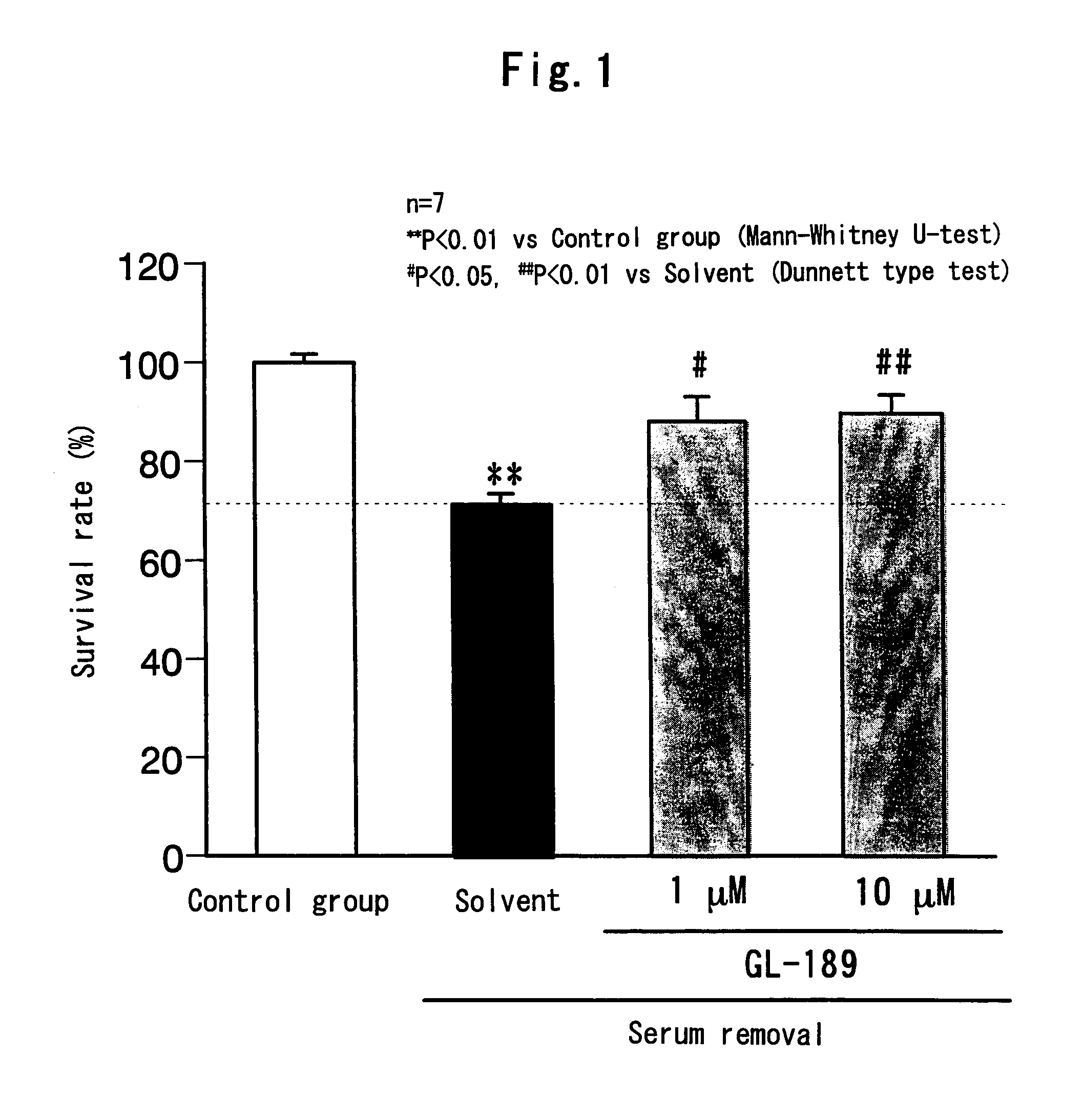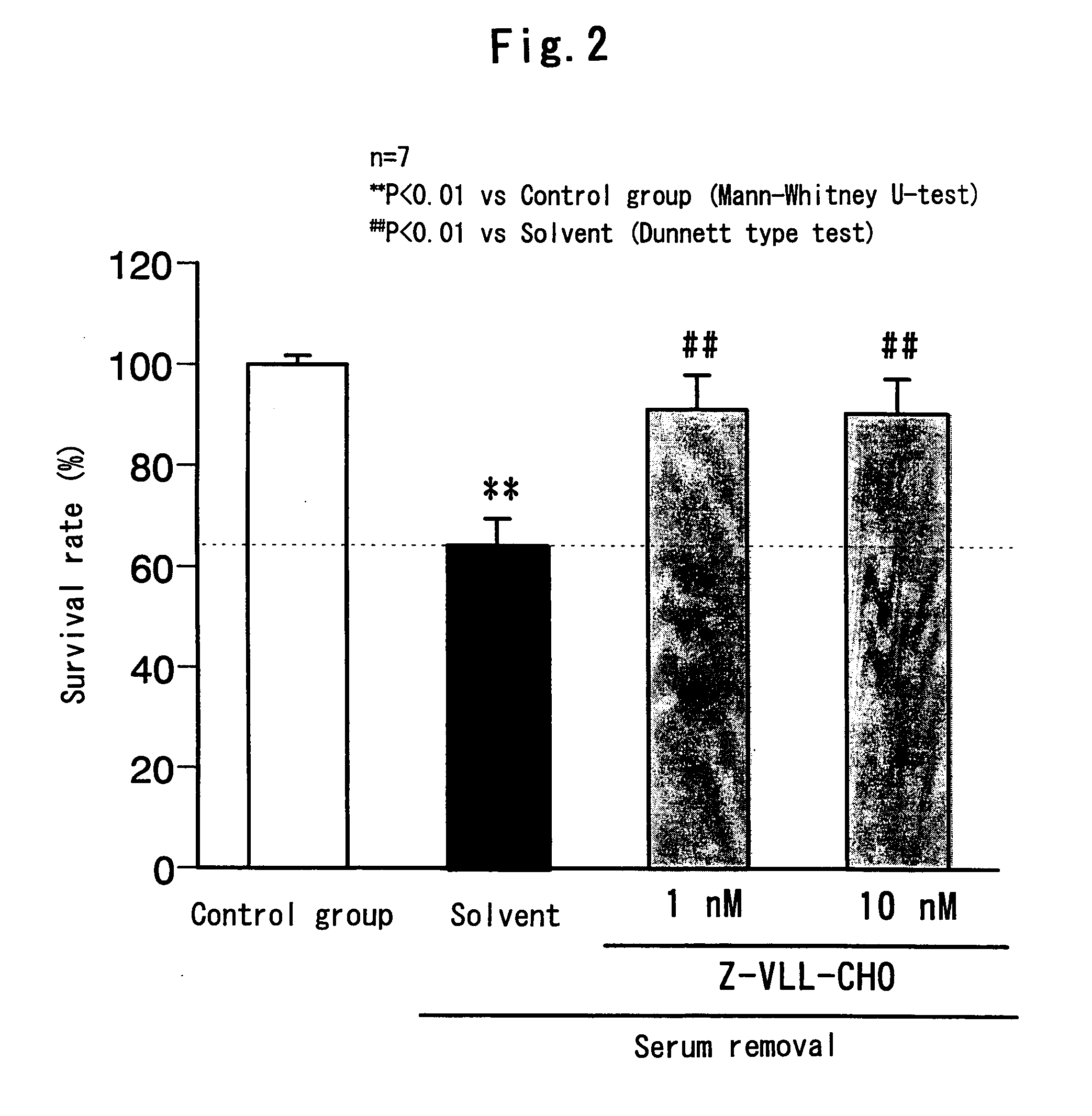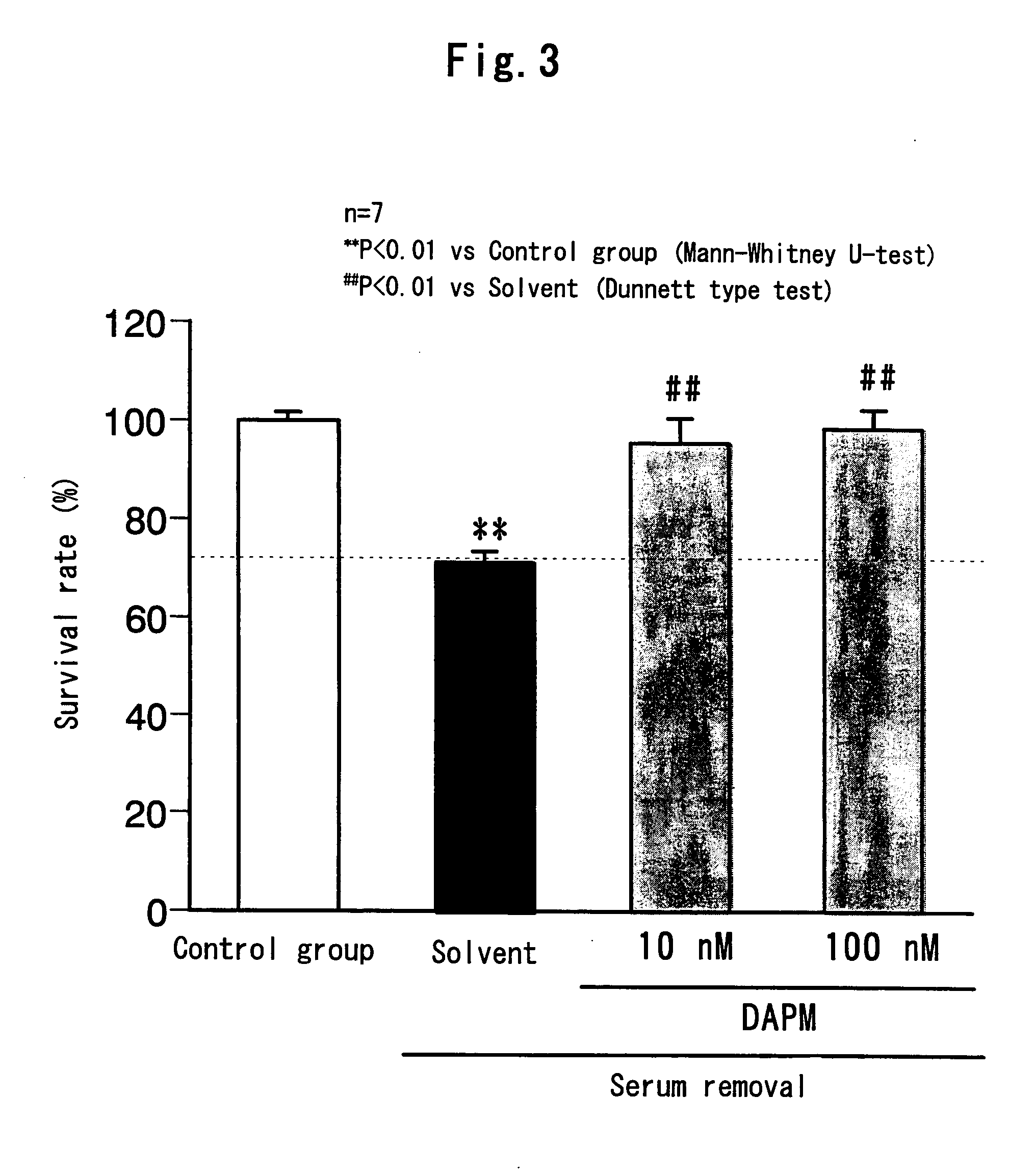Remedy for eye diseases accompanied by optic nerve injuries
a technology of optic nerve injury and therapeutic agent, which is applied in the direction of drug composition, peptide/protein ingredient, metabolic disorder, etc., can solve the problems of visual function, blindness if not treated, and not been studied at all, and achieve the and survival rate of each group.
- Summary
- Abstract
- Description
- Claims
- Application Information
AI Technical Summary
Benefits of technology
Problems solved by technology
Method used
Image
Examples
preparation examples
Preparation Example 1
[0044]
Formulation:GL-189 1 mgConcentrated glycerin250 mgPolysorbate 80200 mgSodium dihydrogenphosphate 20 mgdihydrate1 N sodium hydroxideq.s.1 N hydrochloric acidq.s.Sterile purified waterq.s.Total 10 ml
[0045] To sterile purified water, GL-189 and the above-mentioned components other than GL-189 were added and mixed thoroughly to prepare an eye drop.
preparation example 2
Tablet
[0046]
Formulation:DAPM1mgLactose66.4mgCorn starch20mgCarboxymethylcellulose6mgcalciumHydroxypropylcellulose6mgMagnesium stearate0.6mgTotal100mg
[0047] DAPM, lactose and corn starch were mixed in a mixer, and then carboxymethylcellulose calcium and hydroxypropylcellulose were added to the mixture and granulated. The resulting granules were dried and sized, and then magnesium stearate was added to the sized granules followed by mixing. Then, the mixture was compressed into a tablet with a tableting machine.
PUM
| Property | Measurement | Unit |
|---|---|---|
| thickness | aaaaa | aaaaa |
| flow rate | aaaaa | aaaaa |
| flow rate | aaaaa | aaaaa |
Abstract
Description
Claims
Application Information
 Login to View More
Login to View More - R&D
- Intellectual Property
- Life Sciences
- Materials
- Tech Scout
- Unparalleled Data Quality
- Higher Quality Content
- 60% Fewer Hallucinations
Browse by: Latest US Patents, China's latest patents, Technical Efficacy Thesaurus, Application Domain, Technology Topic, Popular Technical Reports.
© 2025 PatSnap. All rights reserved.Legal|Privacy policy|Modern Slavery Act Transparency Statement|Sitemap|About US| Contact US: help@patsnap.com



